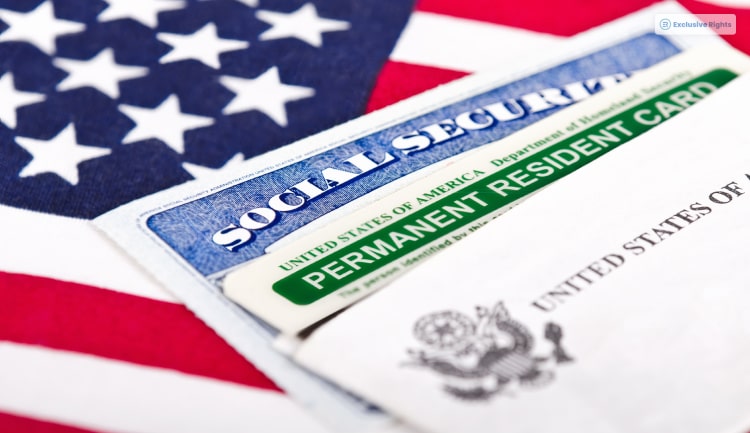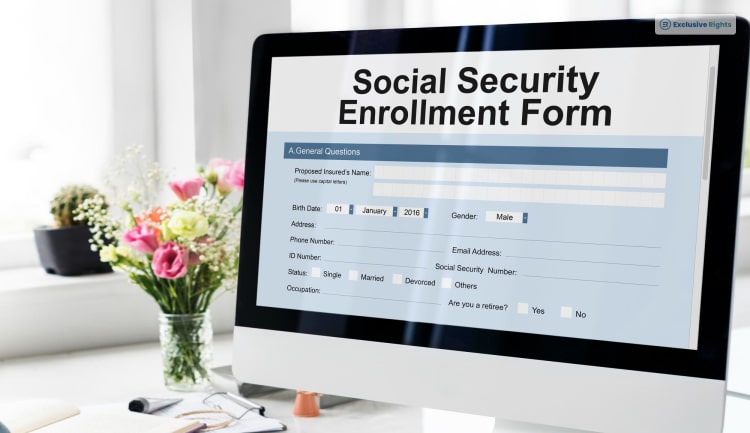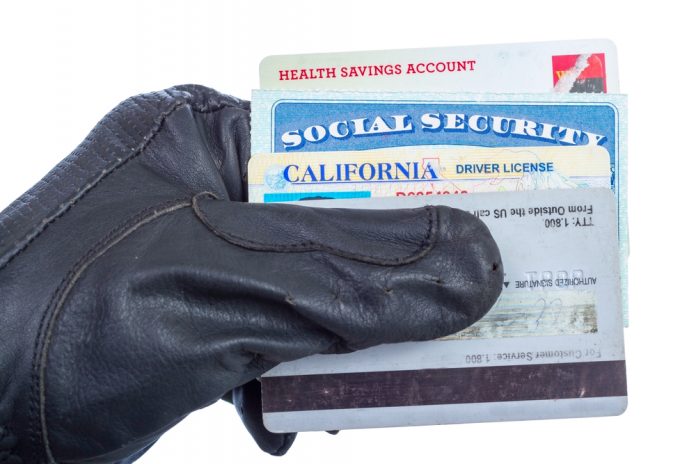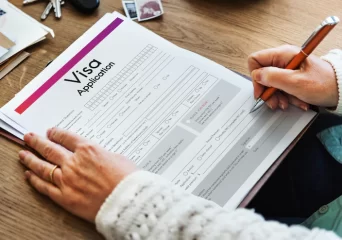
Table Of Contents
- What Is The Social Security Number (SSN)?
- Fun Facts About Social Security Number
- How Does The Social Security Number Work?
- Elements Of Social Security Number
- Area Number
- Group Number
- Serial Number
- Why Do You Need A Social Security Number?
- Additional Reasons For SSN
- How To Get A Social Security Number?
- Step 1: Determine Eligibility
- Step 2: Gather Required Documents
- Step 3: Complete an Application
- Step 4: Visit a Social Security Administration Office
- Step 5: Submit Your Application
- Step 6: Wait for Your SSN
- Where Can I Find My Social Security Number?
- 1. Your Social Security Card: The Holy Grail
- 2. Prior Tax Returns: A Paper Trail
- 3. Social Security Statements: An Official Record
- 4. Previous Employment Records: The Paper Trail of Jobs
- 5. School Records: The Educational Connection
- 6. Tax ID for Banking: It's in the Digits
- 7. Medicare or Health Insurance Cards: Health and Wealth
- 8. Passport and Visa Records: International Identification
- 9. Social Security Office: The Source
- 10. Social Security Website: Online Assistance
- 11. Protect Your SSN: Handle with Care
- Final Thoughts
What Is A Social Security Number? A Comprehensive Guide For 2023
You have probably heard about the term Social Security number, which is also termed SSN. If you are a resident of the United States, then this term is widely used in your vocabulary.
In this article, we will be discussing the various aspects associated with the Social Security Number.
What Is The Social Security Number (SSN)?

The term Social Security number (SSN) refers to the numerical identifier assigned to citizens of the US for the purpose of tracking income and determining the benefits associated with it.
The Social Security number was created in 1936 as part of “The New Deal” with the purpose of providing retirement and disability benefits to US citizens.
Moreover, The foremost intention of the SSN was to track earnings and provide benefits to US residents.
Fun Facts About Social Security Number
- A Social Security number is a numerical identifier assigned to citizens of the United States for tracking income and benefits.
- The SSN was created as a part of the New Deal in 1936.
- Social Security numbers are prone to illegal usage by those involved in identity theft and fraud.
How Does The Social Security Number Work?

With very few exceptions, all US citizens, permanent or working/temporary residents, have a Social Security number assigned to them. Even non-working residents have the capacity to acquire an SSN for the purpose of business or government work.
There is a legal framework for the assignment of a Social Security number to every resident residing within the United States.
Moreover, This is provided under Section 205(c)(2) of the Social Security Act (42 US Code, Chapter 7, subsection 405). Social Security numbers and cards are issued by the Social Security Administration (SSA).
Social Security numbers are random streams of digits. However, before 2011, the numbers used to have a specific purpose.
Due to the risks of the SSN being falsified, the Social Security Administration instead decided to represent a group of numbers.
Elements Of Social Security Number
There are a variety of elements that are included within the SSN. These factors are as follows:
Area Number
The first set of three digits is the area number in the SSN. It is represented by the state issuing the SSN. Moreover, States could have more than one number, depending on the number of people needing SSNs.
Typically, individuals on the east coast have the lowest SSNs. Area numbers tend to ascend as it moves towards the west. Moreover, Due to this, individuals residing in the West have the highest SSNs.
It has been noticed that the number “666” will never be assigned to a Social Security number due to personal beliefs of the region.
Group Number
The following group of two digits is termed the group number. Group numbers tend to range from 01 to 99. Initially, they were not assigned in a consecutive manner.
Moreover, it meant that the group members represented the issuing office.
Serial Number
The last four digits in the third group are the actual serial number of the SSN. Moreover, They tend to ascend from 0001 to 9999 within each group.
Why Do You Need A Social Security Number?

A Social Security number is a vital component for having a direct connection to the benefits in the future that you might be entitled to receive by the American government.
For individuals who begin their working careers, their employers tend to request their Social Security numbers as a component of their application process.
Moreover, Employers also tend to report the data to any state that has an income tax.
Additional Reasons For SSN
You might require a Social Security number for other reasons too, which are as follows:
- For opening a bank account in the US.
- For the application for a federal loan.
- To apply for unemployment.
- An identifier for tax returns.
- To get a driver’s license.
- To acquire a passport.
- For enrolling in Medicare.
How To Get A Social Security Number?

To obtain a Social Security Number (SSN) in the USA, you generally need to follow these steps:
Step 1: Determine Eligibility
You must have a valid reason to obtain an SSN. Moreover, Most commonly, you need an SSN for employment, filing taxes, opening a bank account, and accessing various government services.
Step 2: Gather Required Documents
You will need to provide specific documents to prove your identity, age, and immigration status (if applicable). Commonly accepted documents include:
Proof of Identity: Typically, a valid passport or a government-issued ID card.
Proof of Age: A birth certificate or another document that proves your date of birth.
Work Authorization: If you are not a U.S. citizen, you’ll need to show your work authorization documents, such as a green card or a work visa.
Step 3: Complete an Application
You will need to complete the Social Security Number application form, which is known as Form SS-5.
Step 4: Visit a Social Security Administration Office
If you are applying for an SSN for the first time, you will likely need to visit a local SSA office in person.
Moreover, Check the SSA website or call ahead to make sure you have all the required documents and to confirm the office’s operating hours.
Step 5: Submit Your Application
Submit the completed Form SS-5 and all required documents to the SSA office.
Step 6: Wait for Your SSN
You will receive a Social Security card in the mail. Moreover, Keep this card in a safe place, and do not share your SSN unnecessarily.
Important Notes:
The process might be different for individuals who are born in the U.S. and need a new SSN or for certain non-citizens who are eligible for an SSN but not allowed to work.
Some SSA offices might have specific procedures or requirements, so it’s a good idea to check their website or contact them before visiting.
Be cautious about sharing your SSN with anyone who doesn’t have a legitimate reason to ask for it. Moreover, Protect your SSN to prevent identity theft.
Where Can I Find My Social Security Number?

Your Social Security Number (SSN) is like a secret code that opens doors to many aspects of your financial and personal life. It’s a unique identifier, and you’ll need it for various purposes, from getting a job to filing taxes.
1. Your Social Security Card: The Holy Grail
The most obvious place to find your Social Security Number is on your Social Security card. When you applied for a Social Security Number, you received a card with your name and a nine-digit number on it.
Moreover, It’s a small, important piece of plastic that you should keep in a safe place.
2. Prior Tax Returns: A Paper Trail
If you’ve filed taxes in the past, your SSN should be on every tax return you’ve submitted. Look at the first page of your Form 1040, 1040A, or 1040EZ (the basic tax forms) from a previous year. Moreover, You’ll find your SSN right at the top.
3. Social Security Statements: An Official Record
The Social Security Administration (SSA) used to mail out annual statements that included your earnings history and projected benefits.
Moreover, While they no longer mail these statements, you can create an online account on the SSA website to access your statement, which will display your SSN.
4. Previous Employment Records: The Paper Trail of Jobs
Your SSN is also on your employment records, such as your W-2 forms, which you receive from your employer each year. Moreover, You can check your old W-2 forms to find your SSN.
5. School Records: The Educational Connection
Your school records, especially from higher education institutions, often contain your SSN. Moreover, Moreover, This may include transcripts, financial aid documents, or any official correspondence with your school.
6. Tax ID for Banking: It’s in the Digits
Your bank may have this information on file. Check your account details, or ask your bank to provide it.
7. Medicare or Health Insurance Cards: Health and Wealth
If you have Medicare or private health insurance, your SSN is likely on your insurance card.
8. Passport and Visa Records: International Identification
Your SSN might also appear on your passport and visa records, especially if you’re an international student or visitor. Moreover, Check your passport or visa documentation.
9. Social Security Office: The Source
If you’ve exhausted all other options and still can’t find your SSN, you can contact your local Social Security office.
Moreover, They can help you retrieve your SSN or provide guidance on the steps you need to take to recover it.
10. Social Security Website: Online Assistance
For those who prefer the digital route, the official Social Security website is a valuable resource. You can request a replacement Social Security card online.
Moreover, if you meet the criteria, such as being a U.S. citizen with a driver’s license from a participating state or a state-issued identification card.
11. Protect Your SSN: Handle with Care
While finding your SSN is essential when needed, it’s equally important to protect it. Don’t share it openly or with anyone who doesn’t have a legitimate reason to access it.
Moreover, Social Security Number is a crucial benefit that the US government provides for the purpose of providing benefits to citizens at the time of their need.
Moreover, Identity theft is a real concern, so guard your SSN like the valuable key that it is.
Final Thoughts
Social Security Number was established in the year 1935 with the aim of providing benefits to residents in their retirement or disability.
If you are a resident of the United States, it is crucial that you have an SSN to effectively receive benefits provided by the US government after reaching your retirement or, god forbid, if you face a disability.
Moreover, Social Security Number is a crucial benefit that the US government provides for the purpose of providing benefits to citizens at the time of their need.
Read More:









